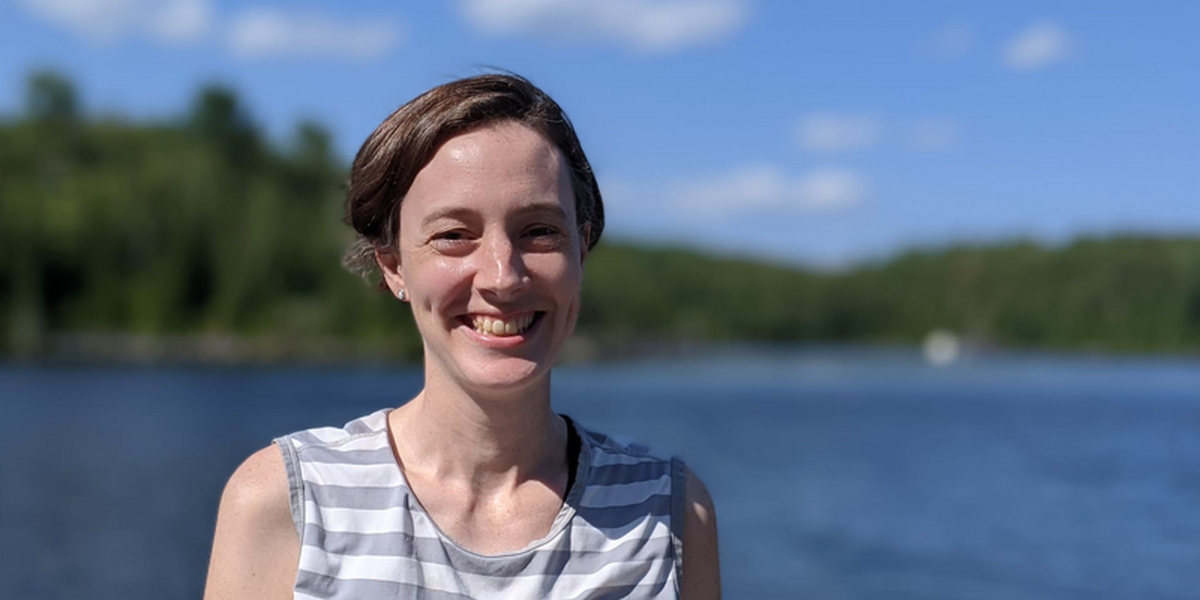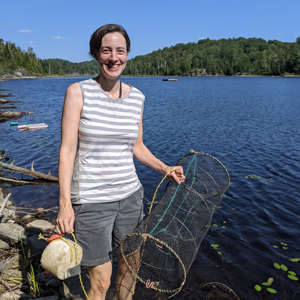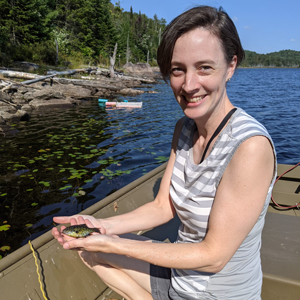
An associate professor in Ecology, Evolution and Behavior, Allison Shaw is building collaborations with researchers at l’Université de Montréal, thanks to the U.S. Department of State and the Fulbright Foreign Scholarship Board.
Shaw models animal movements and seeks to understand how these movements impact other processes in their community. Animals move for a variety of reasons — including food availability, predation risks and mating prospects. In recent years another driver of movement has risen to the forefront of research — parasites. Understanding how parasites drive animal movement is important for tracking infections.
For Shaw, collaborating with Sandra Binning at l’Université de Montréal gives her the opportunity to explore lakes in Quebec’s Laurentian region and learn more about the biology of pumpkinseed sunfish and their parasites, a system Binning has worked on since 2018. This is not the typical venue for Shaw’s research, which often involves hours in front of a screen running models and crunching numbers.
“Modeling is an immensely iterative process. I’ll develop a model, talk through it with collaborators, and then often end up throwing it out and starting over from scratch with an improved version.”
For Shaw, the ability to head into the field as part of this process is exceedingly valuable. Seeing the parasites in-situ, talking through the intricacies of the animals with Binning and her students, and observing the behaviour of infected fish in experiments and in the wild will allow Shaw to develop multiple iterations of the model with the system at her fingertips.
Currently, models tracking parasites and animal movement are too simple. Individuals are treated as either infected or uninfected and the magnitude of infection is completely ignored. For instance, an individual with a high parasitic load is treated the same as an individual with a low parasitic load. This lack of magnitude means that predictions about infection spread overlook an important reality facing wild animals.
Sunfish and their parasites are well suited to tackle questions dealing with infection load. When a trematode parasite infects a fish, it forms a black spot on the fish’s skin. The nature of the infection allows researchers to estimate the severity visually by counting the number of black spots on the fish body and fins. Researchers can catch fish, count its parasites, and monitor the fish’s behavior and physiology in a lab setting to help understand the relationship between infection magnitude and fish behavior. Shaw is hopeful that this system can be used to inform models across other organisms that account for infection load. —Claire Wilson
Photos from the field




Photo credits: Sandra Binning.
For more information about the Fulbright Program or the U.S. Department of State, please visit https://eca.state.gov:443/fulbright or contact the Bureau of Educational and Cultural Affairs Press Office by telephone 202-632-6452 or e-mail ECA-Press@state.gov.